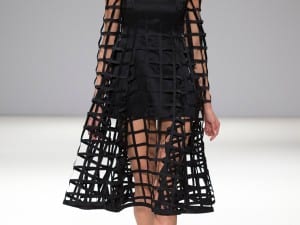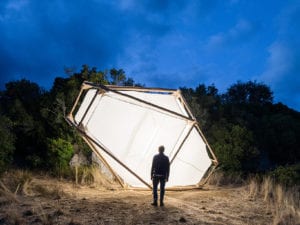Brutalist architecture emerged in the late 1940s. Its significant features include monolithic forms, expressive structures, rough surfaces and unusual shapes. The term “brutalism” was first used by British architect Alison Smithson to describe one of their unexecuted project with partner Peter Smithson. Over the last few decades, discussions have emerged about the legacy of such structures. Some wish to see them receive Grade II listed status – such as Neave Brown’s Alexandra Road Estate – but others would advocate for their demolition, like what happened to Robin Hood Gardens in London. The following list comprises sites from across the world and shows you various characteristics of the architectural style.

Palace of Assembly, Chandigarh, India | Le Corbusier, 1962
In 1947, Le Corbusier (1887-1965) was commissioned by Prime Minister Jawaharlal Nehru, to design a new legislative assembly building for Punjab. It was requested that the structure would be “unfettered by the traditions of the past, a symbol of the nation’s faith in the future.” As the materialisation of this idea, Le Corbusier and his team created a site that incorporates the stylistic approaches of the mid-20th century. The structure of the hall resembles a box, with a portico on one side and concrete piers on the other. As a decoration, the façade bears a repetitive pattern. The roof was inspired by the structure of industrial power stations and cooling towers. To emphasise the entrance, Le Corbusier created an off-centre ceremonial pivoting door. This was hand-painted by the architect featuring vivid primary colours and toned-down shades. Inside, there is a circular assembly chamber for gatherings and stair-free circulation. Besides the capitol complex, most of the administrative sites in Chandigarh were designed by Le Corbusier and his firm. The Palace of Assembly was designated as a UNESCO World Heritage Site in 2016.

Habitat 67, Montreal Quebec | Moshe Safdie, 1967
The housing complex was designed by Moshe Safdie (b. 1938) as the Canadian Pavilion for the 1967 International Exposition in Montreal. When Safdie was interning at Louis Khan’s architectural studio at the age of 23, he was invited to submit his plan for the global event. The original proposal, which was part of Safdie’s thesis project at university, contained shopping centres, schools and 1000 apartments, which were eventually cut down. Habitat 67 was constracted from 354 identical prefabricated modular boxes, consisting of 158 housing units and was an experiment for maximising living environments at a minimal cost in the urban landscape. The containers are stacked on top of each other in a range of configurations and come with large-sized glass windows and green terraces for maximum comfort. The twelve-storey complex blends the positive qualities of high-rise blocks and suburban detached homes.

Geisel Library, San Diego, USA | William Pereira, 1970
William Pereira (1909-1985) was an American architect notable for his expressive proposals and characteristic sites. His original plan for the Geisel Library at the University of San Diego consisted of a spherical building on top of a pedestal. However, this proposal was found to be too space-consuming, and the structural elements of the ball-shaped designs were moved to the outside. This resulted in the current look, which has been described as “a fascinating nexus between brutalism and futurism.” The library’s first two storeys forge a podium, crowned with six additional layers. The most significant materials of the design are the raw concrete skeletal elements and circular floor-to-ceiling windows, that maximise natural light in the interior. Pereira imagined that the construction would be extended with additional green terraces, descending into the valley in which the library is located. The building is part of the logo of the University of San Diego and it is one of the most recognisable sites on the campus.

National Theatre, London, UK | Denys Lasdun, 1976
Known as one of the most controversial and notable examples of Brutalism, Denys Lasdun’s (1914-2001) National Theatre is a distinct site on the South Bank of the Thames. The building was inspired by Denys’ ethos of “architecture as urban landscape,” featuring interconnected walkways, circular terraces, split levels and intertwining staircases. It is formulated by the careful balance between vertical and horizontal masses. Inside, the plan incorporates three individual theatres, bars, restaurants, foyers and several additional areas for hosting events and workshops. Both the rough external and internal surfaces were cast in situ and retained the marks and imprints of wooden shuttering. Even at the time of its completion, the structure received mixed reviews, such as the Prince of Wales who described the project as “a clever way of building a nuclear power station in the middle of London without anyone objecting.” Interestingly, the National Theatre has simultaneously appeared on both the lists of “most hated” and “most loved” London buildings. Despite every criticism, in 1994 it was granted Grade II listing status.

Church of the Holy Trinity, Vienna, Austria | Fritz Gerhard Mayr, Fritz Wotruba, 1976
The Church of the Holy Trinity, known as the Wotruba Church, is located on the outskirts of Vienna. The expressive volumes of the sacral construction were inspired by the works of Austrian modernist sculptor Fritz Wotruba (1907-1975). Fritz Gerhard Mayr (b. 1931), who was the architect of the collaborative project, said: “This is a constant juxtaposition of built form and enclosed space. An ongoing dialogue between the horizontal and the vertical, between light and shadow, between bearing and exerting loads.” The peculiar building consists of 152 concrete blocks varying in size and stacked on top of each other. Concrete, which is usually associated with the urban landscape, here resides in harmony with the surrounding nature. Inside, the hall is modestly furnished to emphasise the silhouette of the framework. Wotruba Church exemplifies the fruitful process of blending creative practices and disciplines.
Words: Fruzsina Vida
Image credits:
1. National Theatre, Image by Simone Hutsch
2. Palace of Assembly, Image by Benjamin Hosking
3. Habitat 67, Image by Green Prophet
4. Geisel Library, Image by Erik Jepsen
5. National Theatre from the northeast, Image by Philip Vile, 2015
6. Wotruba Church, Copyright: Belvedere WIen, Foto: Johannes Stoll





